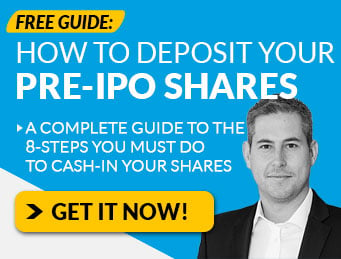One of the most common questions we get from our readers is: “How much should I invest in private equity deals?”
Because of SEC laws, we can’t give you personalized advice…
But even if we could, the answer would still depend on you, your Investment Policy Statement, your financial goals, your risk appetite, and a whole bunch of other things.
However, what we can do is show you a new way of thinking about the private markets… and how to answer the question for yourself.
Start at the Bottom
So, let’s start with a bottom figure.
If you’ve been in the private equity space for long, you’ve almost certainly seen ads and offers that give you an opportunity to get in for “as little as $100.”
Indeed, that’s often assumed to be the least amount you can spend to get in on a deal.
The truth is, every offering has a different minimum.
Some are $100, some are $1,500. Some are higher than that.
The technically true minimum investment is whatever the company has declared their minimum investment in any round.
But that’s only technically true.
As a practical matter, the minimum you should invest in any deal depends on how you’ll exit.
Here’s why…
If the company you’ve invested in decides to go the IPO route, you – the investor – have to deposit your shares into a brokerage account before your shares can be traded.
And here’s what the “get rich from $100” articles don’t tell you about: Clearing fees.
Clearing fees depend on a lot of factors – like the track record of the company, what exchange the company lists on, and the relationship you have with the broker (if any)…
It could cost you thousands of dollars to deposit those shares and sell them.
For my personal calculations, I assume depositing shares will cost at least $1,000.
It could easily be less — maybe only a few hundred dollars. It could just as easily be more — like $1,500, $2,000, or up.
But $1,000 is a nice round number that should be at least in the right order of magnitude (transferring shares shouldn’t cost $5, or $15,000).
From there, you can work backwards.
If you think you could reasonably expect a 10x return on a $100 investment (i.e. your $100 investment goes to $1,000)… and you had to pay $1,000 to deposit the share…
That means your total “cost to participate” was $1,100.
With some basic math… $1,000 – $1,100 = negative $100… and that doesn’t even account for any additional transaction fees and taxes!
Ouch!
So, if you know the company plans on exiting via the public markets, make sure you account for that fee when you’re thinking about how much to invest.
And perhaps more important, you have to decide for yourself if the proverbial juice is worth the squeeze…
- Are you getting a large enough return to justify having that money locked up in a high-risk and illiquid investment?
How big should your expected return be to justify an investment? That’s entirely up to you.
But the practical minimum for any investment is an amount that will – at the bare minimum – make the potential fees worth paying if the company goes public.
Personally, I like to invest well above that minimum number, as projected growth is very different from actual growth, and the rosiest predictions rarely come true.
But that at least gives you a floor to work with. You want to invest enough so that your expected return at least covers the expected transfer fee . You can call that $1,000 — or $2,000 if you want to be more conservative.
But that’s your bottom. Anything that earns less than the transfer fee, you’d lose money turning your private shares into public ones.
What’s the Most You Should Invest?
If you’re a non-accredited investor, the answer to this is easy — as it’s prescribed by law (new rules come into affect soon).
Currently, non-accredited investors can invest a maximum of 10% of their income or their net worth in Reg CF deals annually — whichever is the lesser amount. (That percentage is shifted down to 5% of income or net worth, if both are below $107,000).
On March 15th, that will switch to 10% (or 5%) of the greater amount between income and net worth.
Regardless of which formula applies to you, if your number doesn’t hit $2,200, then you are allowed to invest up to $2,200.
If you are an accredited investor, the sky’s the limit.
That said, it always bears repeating, this is a very risky asset class.
Most VCs assume about half their investments in private companies will go to zero. Maybe 20% will break even. Another 20% will earn a modest return. And only around 10% becoming the moonshot winners that we all chase.
With that in mind, you should never invest more than you can afford to lose. Accredited or non-accredited.
If you can’t write off 100% of your investments and be fine, you’re investing too much.
What’s more — since the real reason you’re here is for the moonshots…
You’ll want to spread your money through multiple investments, to get multiple bites at the apple.
Using a 10% moonshot-success rate (which is purely anecdotal, by the way), that would mean you’d want to invest in a minimum of ten companies to give yourself a good chance of finding a big winner.
Which means — whatever number you’ve decided you can afford to put into private equity deals…
You might want to divide it by 10 for any individual private market deal.
At least, that’s my personal baseline. Some folks prefer to up their odds, and want to invest in 20 or 30 deals to get their best shot.
Others are willing to take on more risk, and only invest in five, hoping they get lucky.
The mantra comes back — it all depends on your own personal comfort with risk, and your own situation.
As promised, I haven’t given you an investment number that you should aim for. Everyone is in a different situation, and has different expectations and tolerances.
Not to mention, each deal is different. A real estate income play, for instance, presents totally different calculations than a traditional private market opportunity.
But hopefully, you now have a better place to start figuring out what you can invest, what you should invest, eventually arriving at what you will invest.
Sincerely,
Ryan Cole – Analyst
Equifund
P.S.
Don’t know your risk tolerance? Unsure the best way to deploy your investable cash? We can help with that.
Generating your own Investment Policy Statement is the first step on any investing journey (in private equity or otherwise).
You can make your own, absolutely free, by answering a few questions right here.





